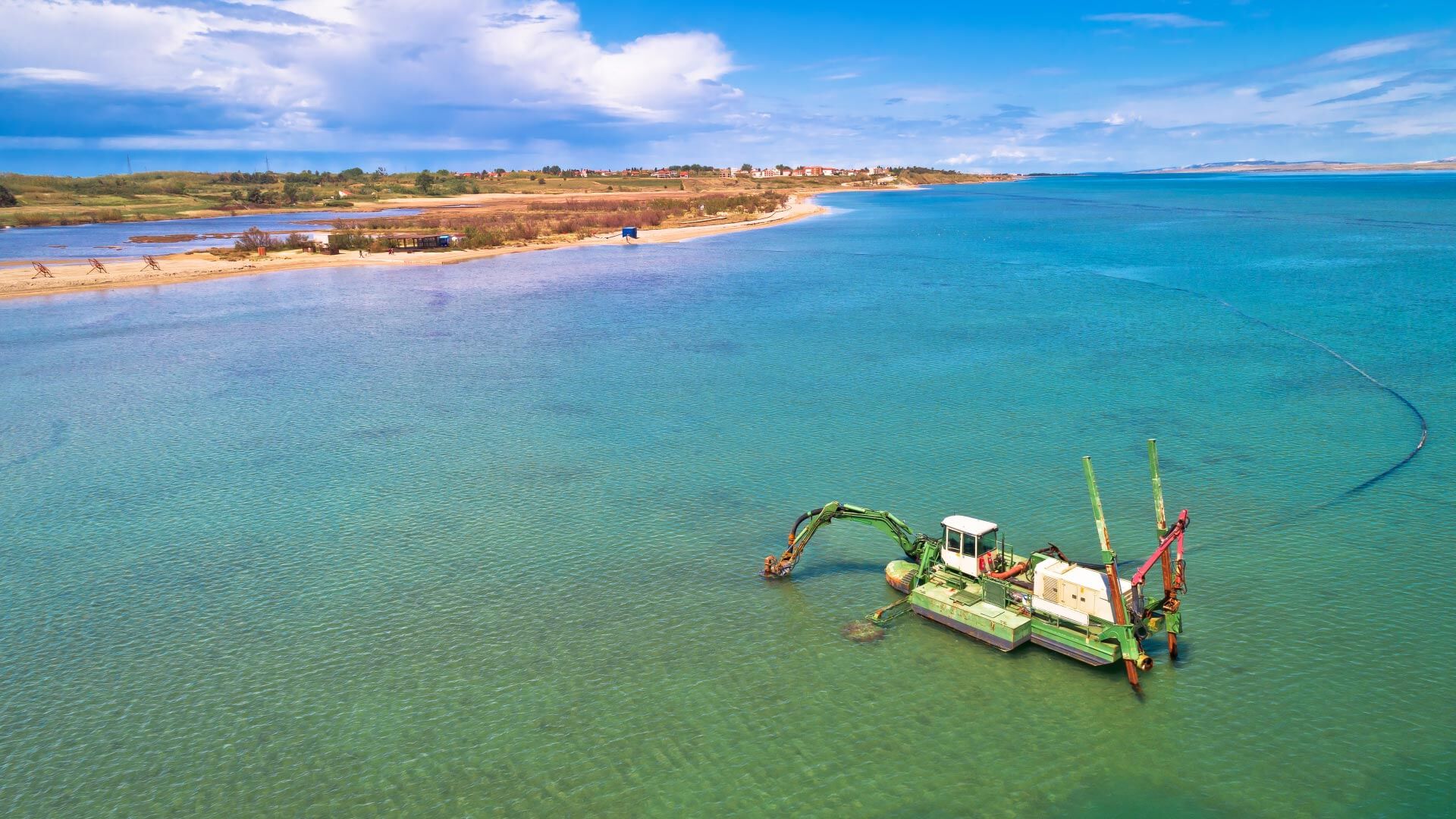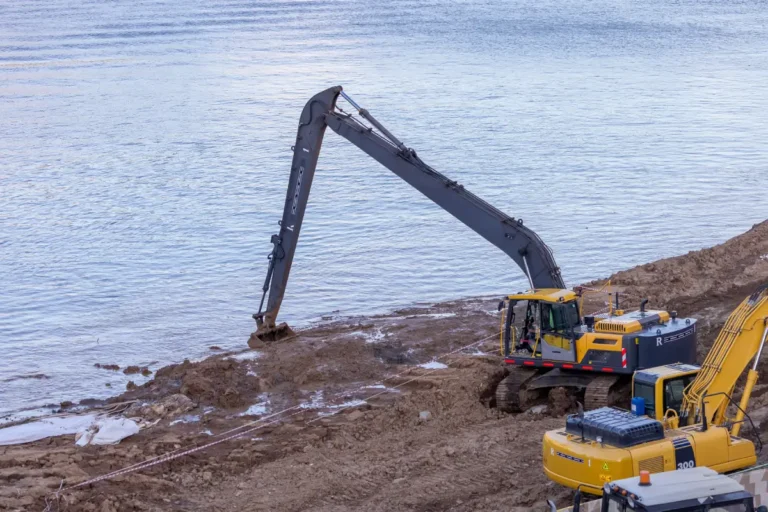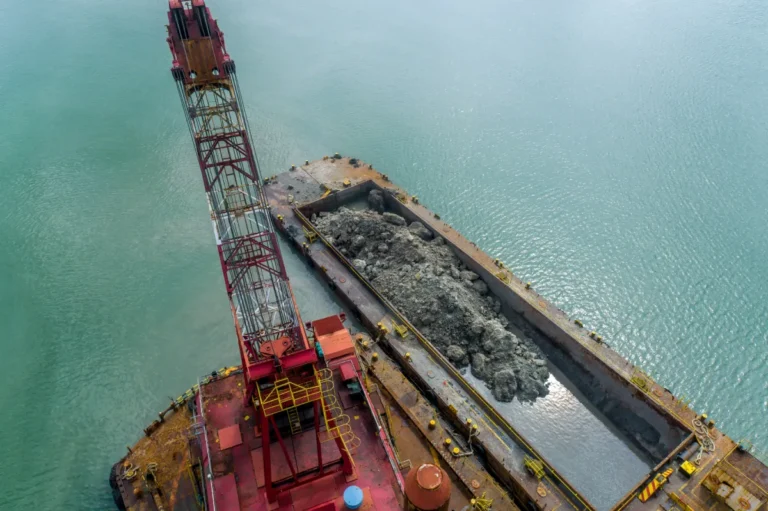Wastewater treatment facilities play a critical role in managing and processing industrial and municipal wastewater to ensure compliance with environmental regulations. One of the most essential yet challenging aspects of these facilities is lagoon dredging—the process of removing accumulated sludge, sediment, and contaminants from wastewater lagoons to maintain operational efficiency. Without regular dredging, these lagoons can experience reduced treatment capacity, increased operational costs, and potential regulatory violations.
Over time, organic and inorganic materials settle at the bottom of treatment lagoons, forming thick sludge layers that can decrease the lagoon’s retention time and oxygen levels. This buildup can lead to foul odors, inefficient wastewater treatment, and costly remediation efforts if not properly managed. To ensure smooth operations, facility managers must implement an effective dredge for lagoon maintenance plan that removes excess sludge while minimizing disruptions to treatment processes.
Advancements in industrial lagoon dredging technology have revolutionized sludge removal by introducing automated dredging systems, high-efficiency pumps, and sustainable sediment management solutions. These innovations allow wastewater facilities to enhance dredging efficiency, reduce labor costs, and more effectively comply with environmental regulations. By leveraging state-of-the-art dredging equipment, treatment facilities can optimize their lagoon performance, improve water quality, and extend the lifespan of their infrastructure.
With the growing demand for sustainable wastewater management solutions, facility operators are prioritizing the integration of advanced lagoon dredging technologies. From remote-controlled dredging systems to non-disruptive sediment removal methods, the industry is evolving to meet efficiency and sustainability goals while ensuring uninterrupted wastewater treatment operations.
The Importance of Dredging for Lagoons in Wastewater Treatment

Effective lagoon dredging is essential for maintaining the efficiency and longevity of wastewater treatment facilities. Over time, organic and inorganic materials accumulate at the bottom of lagoons, forming thick layers of sludge that can significantly impact water quality, system performance, and regulatory compliance. Without regular dredging, these issues can lead to higher operational costs, environmental violations, and reduced treatment capacity, making industrial lagoon dredging a crucial component of wastewater management.
How Sediment Buildup Affects Water Quality and System Efficiency
When sludge and sediment accumulate in wastewater lagoons, they reduce the lagoon’s holding capacity and retention time. This buildup limits the lagoon’s ability to properly settle solids and remove contaminants, leading to poor effluent quality. Excess sludge can also increase biochemical oxygen demand (BOD), deplete dissolved oxygen levels, and create anaerobic conditions that generate foul odors and toxic gases.
Without a proper dredge for lagoon maintenance strategy, facilities may experience inefficient treatment processes, increased energy consumption, and difficulty in meeting discharge standards. Regular lagoon dredging ensures that wastewater is treated effectively, preventing these operational challenges while maintaining compliance with environmental regulations.
Regulatory Compliance and Environmental Sustainability
Strict environmental regulations govern wastewater treatment operations to protect water bodies and ecosystems from pollution. Facilities that fail to control sludge buildup risk exceeding permissible discharge limits, leading to potential fines, legal action, and reputational damage. Industrial lagoon dredging plays a vital role in helping facilities adhere to these regulations by removing excess solids and contaminants before they impact water quality.
Additionally, advanced lagoon dredging technologies promote sustainability by enabling efficient sludge removal with minimal environmental disruption. Eco-friendly dredging methods, such as geotextile dewatering and polymer-assisted sediment separation, allow facilities to manage sludge responsibly while reducing landfill waste and overall environmental impact.
Economic Benefits of Maintaining Lagoons Through Regular Dredging
Investing in proactive lagoon dredging can significantly reduce wastewater treatment facilities’ costs. By preventing excessive sludge accumulation, facilities can avoid costly emergency cleanups, unplanned shutdowns, and equipment failures. Efficient dredging for lagoon operations also extends the lifespan of infrastructure by reducing wear and tear on pumps, aerators, and treatment systems.
Furthermore, improved sludge management enhances energy efficiency by reducing the load on treatment processes, ultimately lowering operational expenses. Facilities that prioritize industrial lagoon dredging not only maintain compliance and environmental responsibility but also benefit from optimized treatment performance and long-term cost savings.
Challenges in Traditional Lagoon Dredging
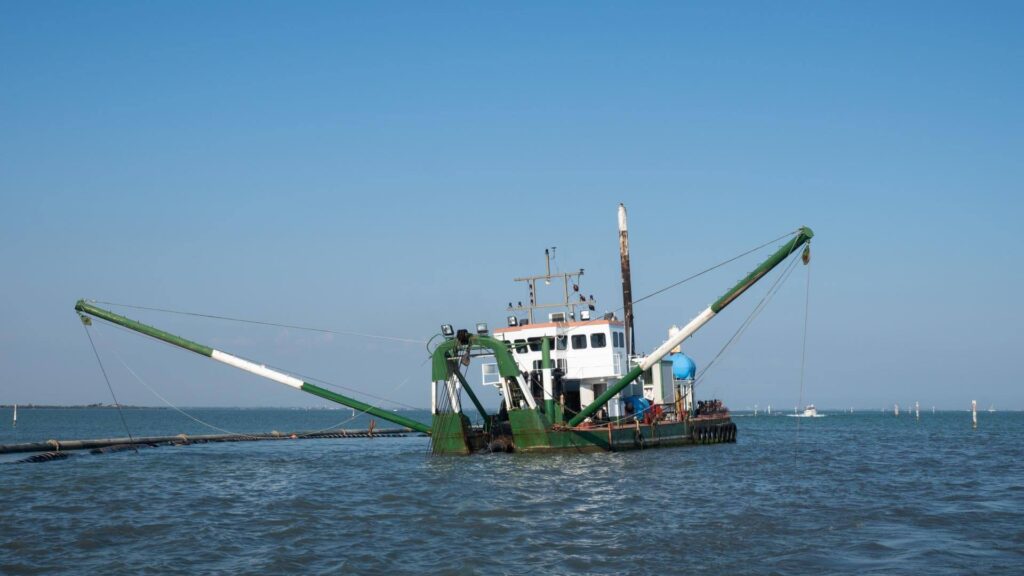
While lagoon dredging is essential for maintaining wastewater treatment efficiency, traditional dredging methods often present significant challenges. Many facilities still rely on manual or outdated mechanical dredging techniques that can be inefficient, disruptive, and costly. As wastewater lagoons accumulate sludge and sediment over time, it becomes increasingly difficult to remove these materials without affecting operations or causing environmental harm. Understanding these challenges highlights the need for more advanced industrial lagoon dredging solutions.
Manual and Mechanical Dredging Limitations
Historically, lagoon dredging has relied on manual labor and mechanical excavation, both of which have considerable drawbacks. Manual sludge removal is time-consuming, labor-intensive, and often ineffective for large-scale wastewater lagoons. Operators using mechanical excavation methods, such as backhoes or draglines, may struggle to remove sludge evenly, leaving behind pockets of waste that continue to impact treatment efficiency.
Additionally, traditional dredge for lagoon equipment often lacks the precision required to target and remove sludge without disturbing the lagoon’s liner or disrupting the biological treatment process. In some cases, mechanical dredging can stir up settled contaminants, reducing water quality and increasing the risk of regulatory violations.
Disruptions to Facility Operations
One of the biggest concerns with traditional lagoon dredging is its impact on facility operations. Many conventional dredging methods require lagoons to be taken offline, forcing treatment facilities to shut down or reroute wastewater temporarily. This can lead to costly downtime, reduced treatment capacity, and logistical challenges in managing wastewater flow.
Furthermore, mechanical dredging often involves heavy machinery that can create safety hazards for workers and increase wear and tear on surrounding infrastructure. In contrast, modern industrial lagoon dredging technologies offer non-disruptive solutions that allow sludge removal to occur without halting wastewater treatment processes.
Environmental Concerns and Sludge Disposal Issues
Dredged sludge disposal is another major challenge in traditional lagoon dredging. Once removed, sludge must be transported and processed in accordance with environmental regulations. Inadequate sludge management can lead to contamination of nearby water sources, soil degradation, and increased greenhouse gas emissions from transportation and disposal operations.
Additionally, mechanical dredging methods often disturb lagoon ecosystems, releasing trapped gases and pollutants into the water. This can compromise effluent quality and increase the likelihood of non-compliance with environmental standards. Sustainable dredge for lagoon solutions, such as geotextile dewatering bags and polymer-assisted separation, help mitigate these risks by providing more efficient and environmentally friendly sludge management options.
As wastewater treatment facilities face growing regulatory and operational challenges, the limitations of traditional industrial lagoon dredging methods underscore the importance of adopting more advanced, efficient, and sustainable dredging technologies.
Innovative Technologies Transforming Lagoon Dredging
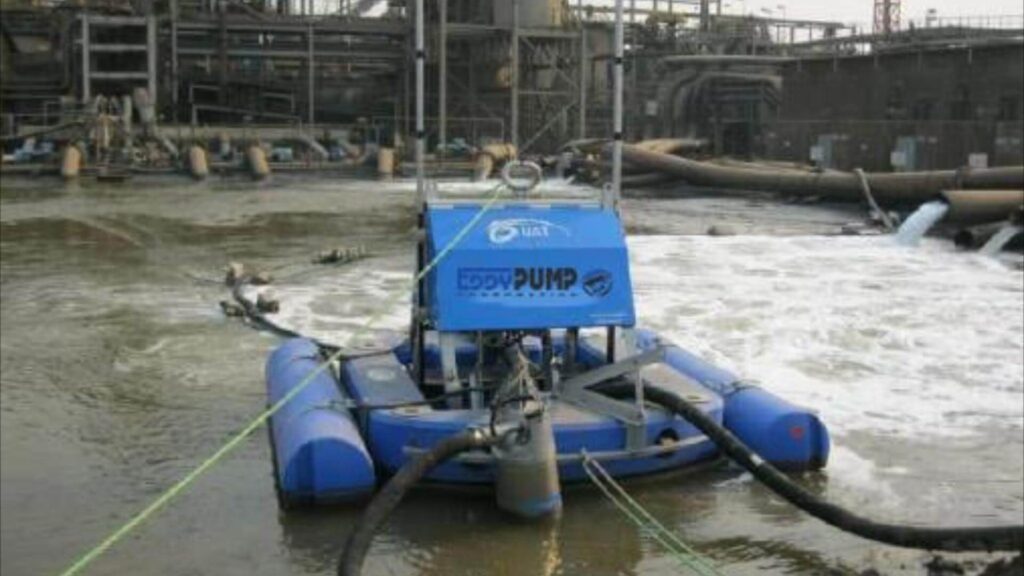
The wastewater treatment industry is embracing advanced technologies to improve lagoon dredging efficiency, reduce operational costs, and minimize environmental impact. Traditional dredging methods often require extensive labor, cause disruptions, and present sludge disposal challenges. However, modern dredge for lagoon solutions, such as automated systems, high-efficiency pumps, and sustainable dredging techniques, are revolutionizing the process. These advancements allow wastewater facilities to maintain peak performance while meeting strict regulatory standards.
Remote-Controlled and Automated Dredge Systems
One of the most significant innovations in industrial lagoon dredging is the introduction of remote-controlled and automated dredging systems. These technologies eliminate the need for manual labor and allow operators to control the dredging process remotely, reducing safety risks and labor costs.
Automated dredging systems use GPS-guided controls and real-time monitoring to precisely target sludge buildup without disturbing the lagoon liner or disrupting treatment processes. This level of precision ensures more efficient sludge removal while preventing unnecessary agitation of settled contaminants.
Advanced Pumping Systems for Industrial Lagoon Dredging
Modern lagoon dredging relies on high-efficiency slurry pumps that are specifically designed to handle thick sludge and sediment without clogging or excessive wear. These pumps can process high solids content while maintaining consistent flow rates, making them ideal for industrial lagoon dredging applications.
High-Efficiency Slurry Pumps for Removing Thick Sludge
Traditional dredging pumps often struggle with dense sludge, leading to operational inefficiencies. However, high-powered submersible and hydraulic pumps are now designed to handle higher viscosities and abrasive materials, ensuring uninterrupted sludge removal.
Benefits of Hydraulic vs. Mechanical Dredging Methods
- Hydraulic dredging uses powerful pumps to transport sludge through pipelines, reducing the need for excavation and minimizing environmental disturbance.
- Mechanical dredging relies on excavators and dredge buckets, which can disrupt lagoon liners and create excessive sludge agitation.
Many facilities are shifting toward hydraulic dredging due to its non-invasive nature, lower maintenance requirements, and improved sludge removal capabilities.
Non-Disruptive Dredging Techniques
Wastewater treatment facilities often struggle with dredging-related downtime, but innovative, non-disruptive techniques allow continuous operation while effectively removing sludge.
In-situ sludge Dewatering and Processing
New dredging technologies enable in-situ sludge dewatering, eliminating the need for expensive transportation and off-site disposal. Systems like geotextile dewatering bags and polymer-assisted solid-liquid separation help reduce sludge volume on-site, making it easier to manage.
Real-Time Monitoring and Data-Driven Dredging Operations
Advanced dredging solutions now integrate sensors and AI-driven monitoring tools to optimize sludge removal. These technologies allow operators to analyze sediment levels, track dredging efficiency, and make data-driven decisions for improved lagoon maintenance.
Sustainable and Eco-Friendly Dredging Solutions
Environmental sustainability is a growing priority in lagoon dredging, leading to the development of eco-friendly dredging solutions that reduce waste and lower the carbon footprint of sludge removal.
Geotextile Dewatering Bags and Polymer-Assisted Sediment Separation
Geotextile dewatering bags provide a cost-effective way to manage dredged sludge by capturing solids while allowing water to drain out. When combined with polymer-assisted separation, these bags significantly reduce sludge volume, making disposal more efficient and environmentally friendly.
Reducing Carbon Footprint Through Energy-Efficient Dredging
Energy-efficient dredging systems, such as solar-powered dredges and variable-speed pumps, help wastewater treatment facilities minimize energy consumption and reduce greenhouse gas emissions. By adopting these sustainable industrial lagoon dredging solutions, facilities can achieve both operational efficiency and environmental responsibility.
With these cutting-edge technologies, lagoon dredging is becoming more efficient, cost-effective, and environmentally sustainable. Wastewater treatment facilities that implement these advancements can significantly improve their sludge management processes while meeting regulatory and sustainability goals.
Choosing the Right Dredge for Lagoon Operations
Selecting the right equipment for lagoon dredging is crucial for maintaining efficient wastewater treatment operations. With various sludge types, lagoon depths, and operational requirements, wastewater facilities must carefully evaluate dredging solutions to ensure optimal performance. The right dredge for lagoon operations will maximize sludge removal efficiency, minimize downtime, and reduce overall maintenance costs.
Key Factors to Consider: Depth, Sediment Type, and Flow Rate
Before choosing a dredging system, facilities must assess the specific characteristics of their wastewater lagoons, including:
- Lagoon Depth: Different dredges are designed for varying depths. Shallow lagoons may require floating or submersible dredges, while deeper lagoons may need hydraulic dredging systems with extended reach capabilities.
- Sediment Type: The composition of the sludge—whether it is light organic matter, heavy industrial sludge, or a mix of solids—determines the type of pump and dredging method needed. Thick, abrasive sludge requires high-powered slurry pumps with anti-clogging features.
- Flow Rate: The speed at which sludge is removed impacts the efficiency of the treatment process. High-flow dredging systems are ideal for large-scale industrial lagoon dredging, while controlled flow rates may be necessary for sensitive environments.
Comparing Different Industrial Lagoon Dredging Equipment
There are several types of dredging equipment available, each suited to specific lagoon conditions and operational needs:
- Cable-driven dredges are ideal for large wastewater lagoons that require systematic, high-volume sludge removal. They offer precise control and efficiency in extensive dredging projects.
- Floating Dredges: Best for continuous lagoon dredging, floating systems allow for sludge removal without disrupting wastewater treatment processes. These are commonly used in municipal and industrial applications.
- Submersible Pump Dredges: Designed for highly viscous and abrasive sludge, submersible dredges work well in deep lagoons and industrial facilities with high-solids content.
- Remote-Controlled and Automated Dredges: Advanced systems eliminate the need for manual labor, increase safety, and improve dredging accuracy. These are ideal for facilities looking to minimize operational disruptions.
Comparing these options based on lagoon conditions ensures the right dredge for lagoon operations is selected for maximum efficiency.
Custom Solutions for Unique Wastewater Treatment Challenges
Every wastewater treatment facility has unique dredging needs, making customized solutions essential for effective sludge management. Facilities handling high volumes of industrial waste may require specialized industrial lagoon dredging systems with reinforced pumps and wear-resistant components. In contrast, environmentally sensitive sites may benefit from non-disruptive hydraulic dredging with geotextile dewatering solutions.
Additionally, some wastewater facilities may require hybrid dredging systems that integrate automated controls, real-time monitoring, and eco-friendly sludge processing technologies. These tailored solutions ensure compliance with regulatory requirements, improve efficiency and reduce long-term maintenance costs.
By considering lagoon depth, sediment composition, and the right dredging equipment, wastewater facilities can optimize lagoon dredging operations and maintain long-term treatment efficiency.
Future Trends in Lagoon Dredging Technology
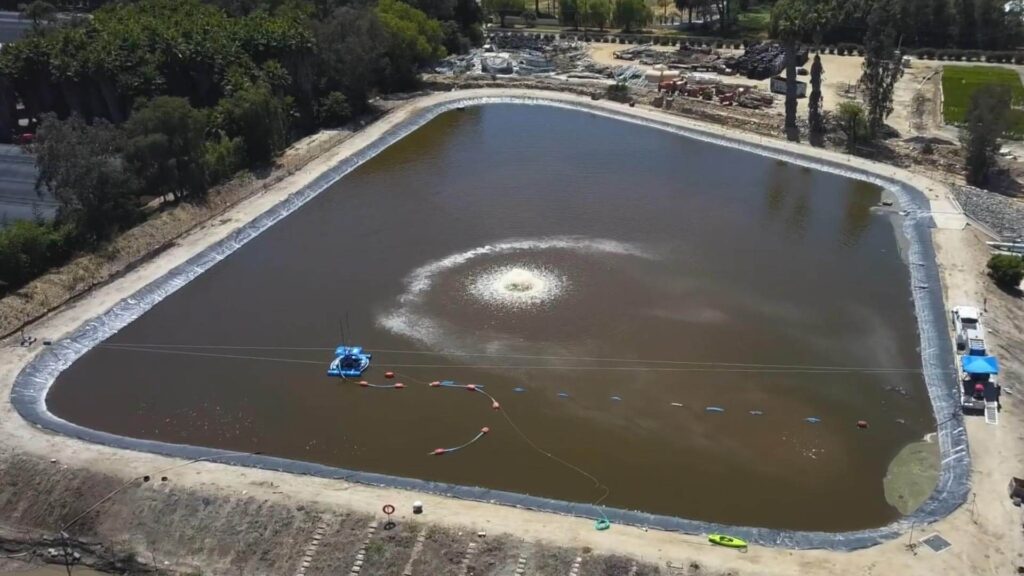
As wastewater treatment facilities continue to evolve, emerging technologies are transforming lagoon dredging into a more efficient, automated, and environmentally sustainable process. Innovations such as AI-driven monitoring, sustainable dredging methods, and IoT integration are enhancing sludge removal while reducing operational costs and environmental impact. These advancements are shaping the future of industrial lagoon dredging, making operations more precise, cost-effective, and compliant with stricter environmental regulations.
AI-Driven Monitoring and Automation
Artificial Intelligence (AI) is revolutionizing lagoon dredging by enabling real-time monitoring, predictive analytics, and automated dredging processes. AI-powered dredging systems use machine learning algorithms to analyze sludge accumulation patterns, optimize dredging schedules, and ensure efficient sludge removal without unnecessary energy consumption.
Automated dredge for lagoon solutions integrate AI-driven sensors that continuously track sediment levels, turbidity, and sludge density. These systems can automatically adjust dredging intensity, ensuring optimal sludge removal without over-dredging or disrupting wastewater treatment processes. AI-based automation also reduces labor costs and enhances safety by minimizing the need for manual intervention.
Sustainable Dredging Innovations and Biodegradable Dredging Agents
Sustainability is a growing focus in industrial lagoon dredging, leading to the development of eco-friendly dredging techniques and materials. One of the latest advancements includes the use of biodegradable dredging agents that break down sludge more efficiently while reducing the environmental impact of dredging operations.
Additionally, sustainable dredging methods such as geotextile dewatering bags, polymer-assisted sediment separation, and closed-loop water treatment systems are helping wastewater facilities minimize sludge disposal challenges. These innovations not only reduce the carbon footprint of lagoon dredging but also improve compliance with environmental regulations.
Integration of IoT for Predictive Maintenance
The Internet of Things (IoT) is crucial to modern lagoon dredging operations by providing real-time data and predictive maintenance capabilities. IoT-enabled dredging systems use smart sensors to monitor equipment performance, track sediment levels, and predict potential issues before they lead to costly downtime.
By integrating IoT technology, wastewater facilities can automate dredging schedules based on actual sludge accumulation rather than relying on fixed maintenance intervals. This data-driven approach optimizes industrial lagoon dredging by preventing excessive equipment wear, reducing energy consumption, and improving overall dredging efficiency.
As these advanced technologies continue to develop, wastewater treatment facilities will benefit from more intelligent, efficient, and sustainable lagoon dredging solutions.
Conclusion
The advancements in lagoon dredging technology are revolutionizing wastewater treatment, making sludge removal more efficient, cost-effective, and environmentally sustainable. Traditional dredging methods often presented challenges such as high labor costs, operational disruptions, and environmental concerns. However, with the introduction of automated dredging systems, high-efficiency pumps, AI-driven monitoring, and sustainable sediment management solutions, wastewater facilities can now optimize their industrial lagoon dredging operations while ensuring regulatory compliance. These innovations not only improve sludge removal efficiency but also extend the lifespan of lagoon infrastructure and reduce overall maintenance costs.
As the industry moves toward more intelligent and eco-friendly dredging solutions, wastewater treatment facilities must adopt cutting-edge technologies to remain competitive and compliant. Investing in remote-controlled dredging systems, biodegradable dredging agents, and IoT-integrated predictive maintenance can significantly enhance dredge for lagoon efficiency while minimizing environmental impact. By embracing these future-forward solutions, treatment plants can improve water quality, reduce operational disruptions, and contribute to a more sustainable wastewater management system.


